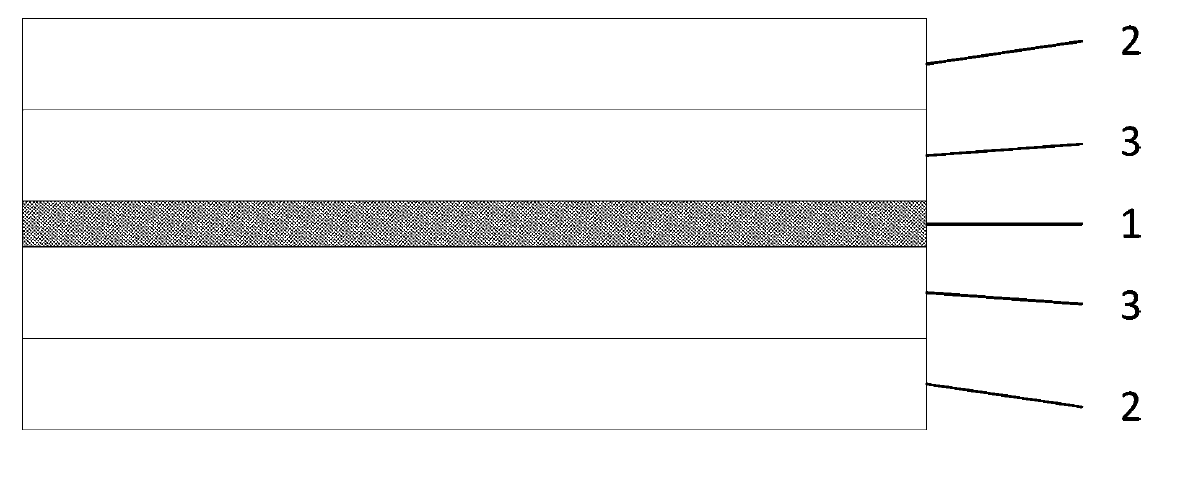Method for adjusting the elasticity of a material and workpiece produced by this method
- Autor:
-
Quelle:
US000011014328B2
- Datum: 25.05.2021
SUMMARY OF THE INVENTION
The object is achieved by a method for adjusting the elasticity of a work material comprising two or more materials which are arranged in layers, wherein the layers have different moduli and are so arranged that, starting from a neutral fiber, they have decreasing moduli. Work materials are substances (materials) which are processed further in production processes and are incorporated into end products. The work materials (materials) are selected from the group containing or consisting of raw materials, auxiliary materials or pre-products and semi-finished products.
Within the meaning of the invention, work materials are understood as being combinations of different material types and/or material grades. Examples of different materials are to be found in Tables 1, 2 and 3. It is important that the materials are present in layers, that is to say individual plies, within the work material and that the moduli of the layers, that is to say plies, are different. According to the invention, the individual layers comprise different materials. In an alternative, combinations of two or more materials may also be present in the individual plies. If the same type of fiber, that is to say fibers of the same type and grade, is used in different orientations, these are two different layers according to the invention. Preferably, a different orientation of the same type of fiber in two different layers at an angle of between 0° and +-45° is chosen. Two layers differ from one another in at least one physical and/or chemical feature, in particular in their E and/or G modulus value. In one embodiment of the present invention, homogeneous fibers are used for each layer, that is to say only one type of fiber is used for each layer. Types or kinds of fibers are given, for example, in Table 3. In this embodiment, mixtures of fibers are not used in the same layer. That is to say, all the fibers of a layer have the same properties, in particular the same chemical and/or physical properties, particularly preferably the same E and/or G modulus values. In one embodiment, the materials are in the form of fibers, optionally present in a matrix. The work material according to the invention therefore comprises a combination of different fiber types, fiber grades and/or fiber orientations. In one embodiment, natural fibers are used, that is to say fibers from sustainable or renewable raw materials. These are raw materials which are of plant or animal origin. According to the invention, a layer can consist of a matrix in which the materials to be used, preferably fibers, are incorporated. Resins known to the person skilled in the art can be used as the matrix. In one embodiment, the same matrix is used for all the layers of the work material. On the one hand, the matrix consequently plays no role in respect of the change in the modulus. On the other hand, further substances, such as, for example, adhesives, which would not fit into the sequence in terms of their modulus, are avoided. In one embodiment, however, different matrices can also be used or the workpiece is provided with a surface finishing. The modulus of the individual plies is preferably increased in the direction towards the layer whose length does not change under loading. Such a layer is the so-called neutral fiber. As a result, the ply with the highest modulus is adjacent to the neutral fiber. The present invention shows that, by using the modulus as the variable in the structural optimization process and increasing the modulus in the direction towards the neutral fiber, or varying the modulus over the stress cross-section, the stress distribution can purposively be influenced and homogenized.
Workpiece within the meaning of the invention denotes any components, such as, for example, bearing structures, mechanical parts, springs (coil springs, spiral springs, leaf springs, etc.), beams, chassis components, et cetera.
The present invention provides a completely new understanding of stress distributions when using anisotropic materials as compared with isotropic materials, since with the novel method this region can also be utilized for a large part of the energy absorption, while in the prior art that structure exposed to low stresses close to the neutral fiber has hitherto either been omitted or filled with a foam or honeycomb structure. A further advantage of the invention is that, in particular when using anisotropic work materials such as, for example, fiber-reinforced plastics, the modulus can be adjusted in a very large range. Thus it is possible to change the stress distribution drastically as compared with isotropic materials. The maximum stress thus no longer necessarily occurs at the surface. Furthermore, uniform and/or homogeneous stress of the entire stress cross-section is advantageously achieved in this manner. A further advantage is that a stress distribution according to the maximum yield strengths, or elastic elongation limits, of the material in question can be achieved.
The method is generally suitable for optimizing all structures subjected to tensile/compressive and bending stress. In addition, in the case of torsional stress, the shear modulus can be varied analogously and a corresponding structure of the work material can be achieved. The presence, or occurrence, of such a neutral fiber, that is to say a deformation-free layer (ply), is essential for the present invention. This finding leads to a stress distribution in the material cross-section which can be adapted to the material used in each case. Accordingly, the combination of materials with different moduli is critical.

